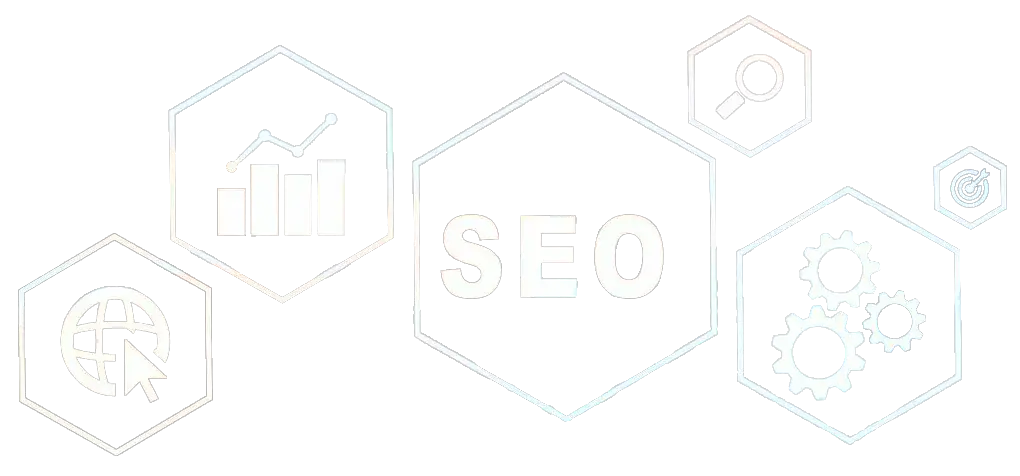
Content is King,
but Without the Knights, the Kingdom Will Fall
In the world of SEO, we often hear the phrase "Content is King." And indeed, great content is the backbone of any successful online presence. However, as every kingdom needs its defenders, content needs the right strategies, tools, and techniques to ensure its reign.
Without SEO, technical optimization, and a well-crafted strategy, even the best content can be left unnoticed. It’s like building a magnificent castle without the knights to protect it – no matter how grand, it will struggle to stand strong against the forces of the digital world.
At PajaGrowth, we don’t just create great content; we equip it with the right tools to ensure it thrives and gets the attention it deserves. Through proven SEO techniques, we help your content not only be discovered but also recognized and valued.
Get in touch to get a quote
Practical Tips and Advice for Optimising Your Website's SEO
The topic of SEO optimisation is very broad. Here, I’d like to offer a concise summary of some practical tips. Please don’t take everything I say too literally.
1. Make Sure Your Website is Mobile-Friendly
More than half of all web traffic comes from mobile devices. Google prioritises mobile-friendly sites in its rankings. Use tools like Google’s Mobile-Friendly Test to check your site and make necessary adjustments to ensure a smooth experience on smartphones and tablets.
Ensuring your website is responsive and works well on various devices is essential. Here are some of the best tools you can use to test your site's responsiveness:
Top Tools for Checking Website Responsiveness
-
Responsive Design Checker
https://responsivedesignchecker.com
A simple tool where you enter your URL and check the design on multiple devices. -
Google Mobile-Friendly Test
https://search.google.com/test/mobile-friendly
Google's official tool that tells you if your page is mobile-friendly, with detailed recommendations. -
Lighthouse (Chrome DevTools)
Built into Google Chrome DevTools.
Open DevTools (F12) → Audits → select Mobile and run the test. You’ll also get audits for speed and accessibility.
2. Improve Your Website’s Loading Speed
A slow website frustrates users and harms your SEO rankings. Optimise images, leverage browser caching, and minimise code (CSS, JavaScript) to speed up your site. You can check your site’s speed with tools like Google PageSpeed Insights.
Top Online Tools for Checking Website Loading Speed
Monitoring and optimising your website’s loading speed is crucial for SEO and user experience. Here are some excellent online tools to help you analyse your site’s performance:
-
Uptrends Website Speed Test
https://www.uptrends.com/tools/website-speed-test
Tests website speed from multiple locations worldwide with detailed analysis and recommendations. -
Google PageSpeed Insights
https://developers.google.com/speed/pagespeed/insights/
Google's official tool that analyses your website's performance on both mobile and desktop devices, providing suggestions for improvements.
3. Use Clear and Relevant Keywords
Research which keywords your target audience is searching for and naturally include them in your page titles, headers, meta descriptions, and throughout your content. Avoid keyword stuffing — focus on relevance and readability.
Top Online Tools for Finding Relevant Keywords and Key Phrases
Finding the right keywords is essential for effective SEO. Here are some of the best tools to help you discover relevant keywords and key phrases for your website:
-
Ubersuggest
https://neilpatel.com/ubersuggest/
A user-friendly tool offering keyword suggestions, search volume, competition data, and content ideas. -
SEMrush
https://www.semrush.com
A comprehensive SEO suite that includes keyword research, competitor analysis, and more (paid with limited free options). -
Google Keyword Planner
https://ads.google.com/home/tools/keyword-planner/
Google’s own tool designed for advertisers, but also excellent for SEO keyword research and discovering search volume data.
4. Use a Clear and Logical Heading Structure
Proper use of headings (<h1>, <h2>, <h3>, etc.) helps search engines understand the hierarchy and content of your pages. It also improves accessibility and makes your content easier to navigate for users. Make sure to use just one <h1> per page and organise your headings hierarchically.
Online Tools to Check Heading Structure and Accessibility
Ensuring a proper heading structure is crucial for SEO and accessibility. Here are some online tools that can help you verify your website’s heading hierarchy and overall accessibility:
-
WAVE Web Accessibility Evaluation Tool
https://wave.webaim.org/
Analyses your web page for accessibility issues, including heading structure, colour contrast, and ARIA usage. -
HTML Validator (Nu Html Checker)
https://validator.w3.org/nu/
Checks HTML markup validity, which helps ensure proper use of heading tags and overall page structure. -
Siteimprove Accessibility Checker
https://siteimprove.com/en-us/accessibility/accessibility-checker/
An easy-to-use extension that scans your page for accessibility and structural issues including heading usage. -
Microsoft Accessibility Insights
https://accessibilityinsights.io/
Free toolset from Microsoft to check accessibility compliance, including proper heading hierarchy.
5. Create High-Quality, Valuable Content
Content is king. Publish useful, original, and engaging content that answers your visitors' questions and meets their needs. Regularly updating your content also signals to search engines that your site is active.
Online Tools to Check Content Quality and Originality
High-quality and original content is essential for SEO and user trust. Here are some great online tools to help you assess and improve your website content:
-
Hemingway Editor
https://hemingwayapp.com/
Helps make your writing clear and easy to read by highlighting complex sentences and passive voice. -
Yoast SEO Content Analysis
https://yoast.com/seo-blog/
Provides real-time content SEO analysis and readability checks, ideal for WordPress users. -
Google Search Console
https://search.google.com/search-console
Offers insights into how Google indexes your content and alerts you to any issues affecting content visibility.
6. Optimise Your Meta Titles and Descriptions
Each page should have a unique meta title and description that accurately reflect the content. These elements show up in search engine results and strongly influence whether users click on your page.
Online Tools for Optimising Meta Titles and Descriptions
Well-crafted meta titles and descriptions improve click-through rates and search engine rankings. Here are some useful online tools to help you optimise these elements:
-
Screaming Frog (Screaming Frog SEO Spider)
https://www.screamingfrog.co.uk/seo-spider/
A powerful desktop program that crawls websites to analyse onsite SEO factors like broken links, duplicate content, and meta tags. -
Google Search Console
https://search.google.com/search-console
Provides insights into how your meta titles and descriptions perform in search results.
7. Fix Broken Links and Redirects
Broken links (dead links) frustrate users and can harm your SEO. Regularly check your website for broken links and set up proper 301 redirects where necessary to maintain a smooth user experience and preserve your site's SEO value.
Online Tools for Testing and Optimising User Experience (UX)
Good user experience is key to keeping visitors engaged and improving SEO metrics like bounce rate and session duration. Here are some excellent tools to test and optimise UX on your website:
-
Hotjar
https://www.hotjar.com/
Offers heatmaps, session recordings, and feedback polls to understand how users interact with your site. -
Google Analytics
https://analytics.google.com/
Provides detailed user behaviour data, including bounce rates, session durations, and user flow. -
Google PageSpeed Insights
https://developers.google.com/speed/pagespeed/insights/
Measures page loading speed, a critical factor for good UX, and provides optimisation suggestions.

Comprehensive Online SEO Tools for Website Analysis
To effectively optimise your website’s SEO, it’s helpful to use a range of tools that provide audits, keyword tracking, backlink analysis, and more. Here are some popular all-in-one SEO platforms:
-
SEObility
https://www.seobility.net/
A comprehensive SEO checker that scans your entire website for errors, broken links, keyword rankings, and optimisation opportunities. -
Screaming Frog (Screaming Frog SEO Spider)
https://www.screamingfrog.co.uk/seo-spider/
A britsh powerful desktop program again. I think it's good! Crawls websites to analyse onsite SEO factors like broken links, duplicate content, and meta tags. -
Ahrefs
https://ahrefs.com/
A top-tier SEO toolset for backlink analysis, competitor research, keyword tracking, and site audits (paid with limited free features). -
SEMrush
https://www.semrush.com/
A widely-used SEO suite offering keyword research, site audits, rank tracking, and competitive intelligence. -
Google Search Console
https://search.google.com/search-console
Free tool from Google offering detailed reports on your site’s indexing, performance, and SEO issues.
Naturally, there are other tools available – perhaps even better ones. If you know of any, I’d be grateful if you let me know!
Clearing Cache: Why and How to Do It
Cache can be a bit of a nuisance. It stores temporary files to help websites load faster, but sometimes it causes problems by showing outdated content or slowing down your browser.
How to Clear Cache in Your Browser
You can usually clear cache in any browser using these handy keyboard shortcuts:
- Windows: Press
Ctrl + F5 - Mac: Press
Cmd + Shift + R
These shortcuts open the clear browsing data window, where you can select Cached images and files (sometimes called Temporary files) and clear the cache.
For example, in Google Chrome:
Menu (three dots) → More tools → Clear browsing data → Cached images and files → Clear data.
Clearing Cache in Your Operating System
- Windows: Use the Disk Cleanup tool to remove temporary files.
- macOS: Cache files are stored in
~/Library/Caches/. You can safely delete the contents, but proceed with caution.
Cache in Web Tools and Servers
If you use CMS platforms like WordPress or Joomla, you might have cache plugins that need clearing (e.g., WP Super Cache). Also, some hosting providers or CDNs like Cloudflare offer cache clearing options.
Clearing Cache on Hosting and Proxy Servers
It's important to remember that cache isn't only stored on your device or browser. Hosting providers often use server-side caching to improve performance. Likewise, proxy services such as Cloudflare can cache your site’s content to speed up delivery to visitors.
When you make updates to your website, you may need to clear the cache on your hosting server or proxy service to (or both) ensure visitors see the latest version. Check your hosting control panel or Cloudflare dashboard for cache clearing options.
Clearing cache regularly can help keep your browser and websites running smoothly.
SEO – Search Engine Optimisation
SEO (Search Engine Optimisation) is essential for ensuring your website is indexed correctly and ranks high in search engines like Google. A strong SEO strategy helps your pages appear at the top of search results — bringing in more visitors and potential customers.
Effective SEO includes many elements: keyword strategy, technical setup, URL structure, site speed, mobile responsiveness, and quality content. Our approach combines these components to make your website not only beautiful and user-friendly but also highly discoverable.
SEO is the foundation of web marketing
Stop paying Google for every click! Invest in quality SEO and web design that brings long-term, organic traffic. Well-optimised websites grow naturally and don’t rely on paid ads for visibility.
SEO is a long-term process requiring a clear strategy and continuous refinement. With our web design and optimisation services, you’ll get a visually strong, technically sound, and search-optimised website that competes with the best.
Make SEO the cornerstone of your business strategy
SEO means configuring your website so people can actually find you. It’s about visibility, relevance, and ranking.
Your brand deserves attention. Our SEO strategies make sure potential customers discover you before the competition.
Questions about SEO? Get in touch here.
On-Page SEO (Optimisation on the Website)
Google's algorithm is constantly evolving. Keeping up is a challenge — but one constant is the importance of on-page SEO, which focuses on content and technical improvements directly on your website.
Meta Tags and Click-Through Rate (CTR)
Meta tags may not directly impact rankings, but they influence whether users click on your listing in search results. Optimised title tags and meta descriptions can boost CTR — a signal Google values when ranking pages.
Key On-Page SEO Elements
- Crawl error fixes (broken links, blocked content)
- Page speed optimisation
- Keyword research and placement
- Content quality and structure
Common Errors That Hurt SEO
- 404 error pages
- Duplicate or missing content
- Missing or poorly written meta tags
These can harm your rankings and potentially lead to search penalties. We fix them quickly and thoroughly.
Keyword Strategy
Keywords are the search terms your audience uses. We help you identify the right keywords for your business and strategically place them throughout your content, titles, and structure.
Content Optimisation
Google values helpful, user-friendly content. We ensure your text is natural, clear, and valuable — both to users and to search engines.
- Use clear headings (H1–H3)
- Include internal linking for navigation and SEO
- Optimise URLs for relevance and readability
Page Speed
Fast-loading pages are critical for user satisfaction and SEO. Images should be compressed — ideally under 100 KB — and videos optimised using modern formats like WebP. We make sure your site loads fast across all devices.
Final Thoughts on On-Page SEO
On-page SEO is the backbone of a solid online strategy. It helps both search engines and users understand your site. Without it, you lose visibility — and your audience.
Good SEO is not a one-time task. It must be reviewed and improved regularly.
Want to dive deeper? Check out Moz's Guide to SEO Topic Clusters.

Recommended SEO Tools
We also use various technical tools to thoroughly analyse and test your website’s performance.
Off-Page SEO (Optimisation Outside the Website)
Off-page SEO includes all external activities that help your site rank higher. It’s the counterpart to on-page optimisation and focuses on authority, reputation, and visibility across the web.
Key methods include:
- Building backlinks from reputable sources
- Promoting content via social media
- Content syndication and guest blogging
Backlink Building
Backlinks are one of Google’s top three ranking factors. A healthy backlink profile signals trust and authority. We use proven strategies to earn backlinks naturally — through valuable content, outreach, and relationship building.
The first rule of building backlinks: your content must be valuable enough that others want to link to it.
A clever trick? Mention industry influencers in your articles — they might just share your content.
For more techniques, visit: Moz Blog – Link Building Strategies
Social Media Sharing
Social media doesn’t directly affect rankings, but it increases reach. More reach = more visibility = more backlink opportunities.
Want to manage your social posts effectively? Use Buffer to schedule and publish content in advance.
The website is often just decoration for the owner
This is apparently called professional deformation. When I come across a website from a colleague, supplier, or even randomly, I immediately check how it performs in basic SEO – i.e., how easily clients can find it in search engines. For this, I prefer using SEObility. And in 99% of cases, I find something like this:

Small Case Study of an Unnamed Website
Meta description
The website has an empty meta description – simply adding a line of relevant text can bring the SEO score much closer to 100%.
Page quality
1. The meta title does not reflect the website content.
2. The page contains only a third of the text it should have for SEO.
3. The Apple touch icon is missing.
4. Images lack alt attributes.
5. The website has weak social media integration.
These are all easy-to-fix yet damaging issues.
Page structure: The H1 tag is completely missing, so search engines don’t know how to categorise the site. It's just a missing main heading — easily fixed.
Link structure
Links should not use the same anchor text repeatedly — this hurts SEO clarity.
The server is lost
The www and non-www versions of the site are treated as separate domains. Fix this with a 301 redirect (via `.htaccess`, PHP, a WordPress plugin, or on Cloudflare).
Image and video size
Images over 100KB and videos over 50MB are problematic. Background videos should stay under 10MB. Use cloudconvert.com to compress and convert. Videos should ideally be hosted on platforms like YouTube.
Such a website is nearly invisible in search engines — unless it has zero competition (rare today). Fixing these errors typically takes just a few minutes and pays off fast.
I will fix your website or create a new one
And not only will it be visually attractive (I can replicate existing designs if needed), but it will also be fully optimised for performance in Google and other search engines.
The results of my work must look at least like this:

External factors — such as backlinks — are part of Off-page SEO, and can take longer to build. A designer doesn’t always control this.
All other issues (see image above) are fixable — and every detail matters. Sadly, many designers skip crucial SEO tasks: alt attributes, heading structure, meta info. The result? A pretty website no one finds. So the client ends up paying Google Ads for traffic that better SEO could have delivered for free.
